Text
Please check out the screenshots of all these fine telly werewolves! I totally don't have ulterior motives for sharing this, honest.
(In all seriousness, glad I could help <3)
The Werewolf TV Series Image Repository
I'm pleased to announce that my post of TV werewolves is up! Screencaps of nearly every werewolf on tv, organized by decade and year they aired. Includes effects credits.

11 notes
·
View notes
Text

Wes Craven's Cursed had a notoriously troubled production. Originally the film had Rick Baker onboard, and his werewolf design for the transformed Joanie is seen above. However, after interference from producer Bob Weinstein (the only slightly less vile of the Weinstein brothers), Baker's design was entirely abandoned; Baker was and still is justifiably bitter as his name was still used in the final film's credits against his wishes.
3 notes
·
View notes
Text
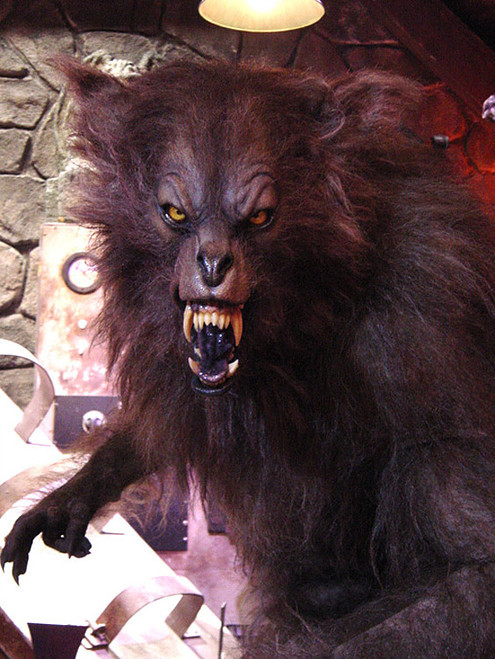
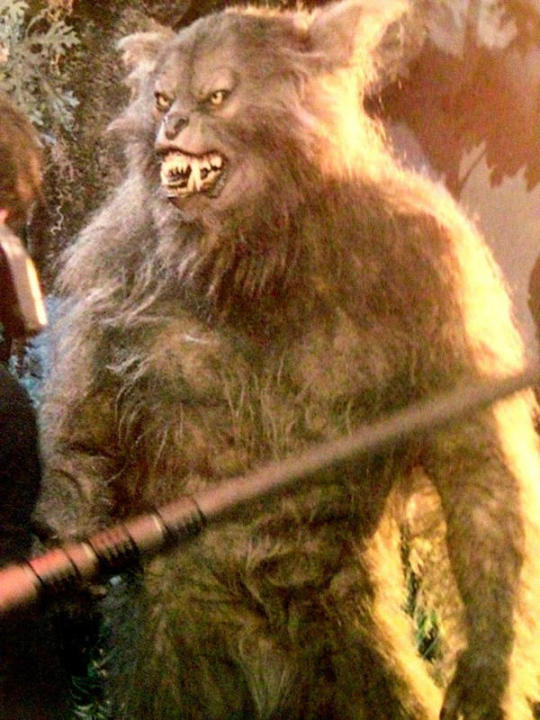

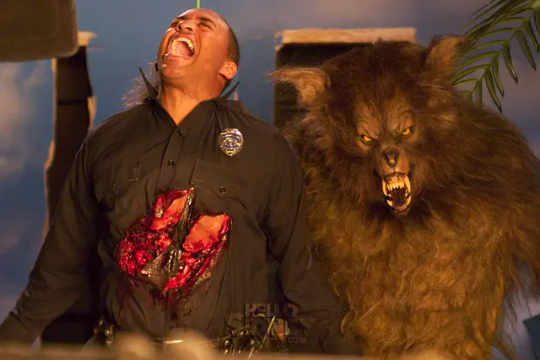

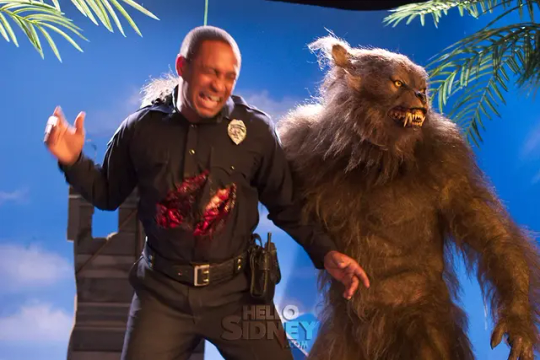
The werewolf form of Joanie in Wes Craven's ill-fated Cursed (2005) was designed and realized by Greg Nicotero and his KNB EFX Group. Rick Baker was NOT involved on the final film, though as of now I'm unsure how much influence had had on the final Joanie design.
Noticeably, for action sequences Joanie is realized as a competer generated model. As such, the practical suit actually did not have any sculpted feet! A soft rubber puppet head was also used for close-up sequences where we'd only see Joanie biting into her victims.
#Cursed#Wes Craven#Greg Nicotero#KNB EFX Group#Joanie#Judy Greer#werewolf#werewolves#practical effects#special makeup effects#Rick Baker
7 notes
·
View notes
Text

Michael Pare's transformation into a werewolf in Eric Red's Bad Moon (1996) is one aspect of the film that has not aged well. Prosthetic appliances were applied, designed similarly to tho werewolf transformation prosthetics Steve Johnson had previously designed for Evil Ed's death sequence in Fright Night.
Unfortunately, these makeups were blended together with digital morphing effects (in a similar manner to the equally poorly aged transformations in Sleepwalkers). Both Steve Johnson and Eric Red deeply regret this, with Red's directors cut even cutting out most of the transformation.
#Bad Moon#Eric Red#Michael Pare#Uncle Ted#Steve Johnson#prosthetic makeups#special makeup effects#practical effects#werewolves#werewolf
4 notes
·
View notes
Text

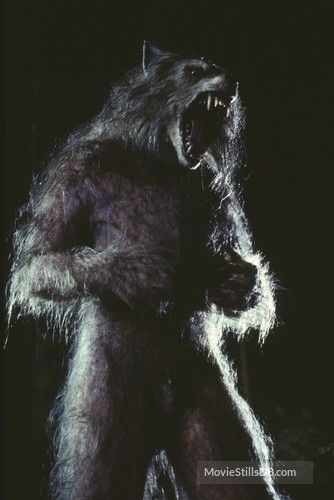

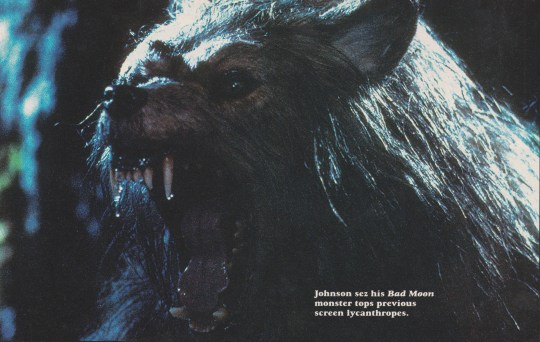

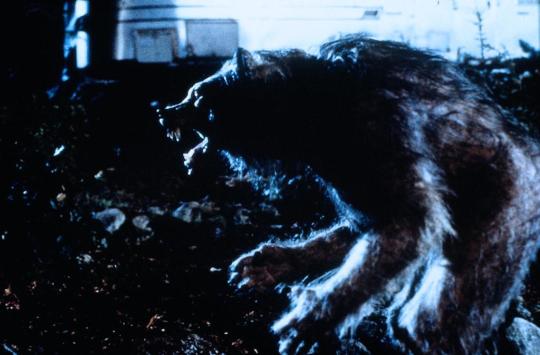
The werewolf form of Uncle Ted in Eric Red's Bad Moon (1996) was designed by Steve Johnson's XFX Inc.
Johnson's inspiration for the werewolf's design came from Warren Publishing's magazines such as Creepy, Eerie and Vampirella; according to Johnson, one story had a werewolf which was 'human in its lower body, waist down, but its upper body was wolf-like. Johnson doesn't specify the cover in question.
The head animatronic was designed and sculpted by Bill Corso, who emphasized the wolfish aspect rather than previous werewolf designs - the werewolf suit was so wolf-like that it intimidated most of the german shepard attack dogs used in filming, making them unwilling to attack the werewolf performer!
#Bad Moon#Uncle Ted#Steve Johnson#Bill Corso#werewolf#werewolves#animatronics#special makeup effects#practical effects#Eric Red
12 notes
·
View notes
Text

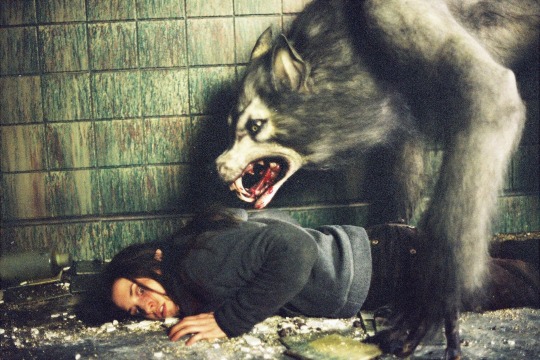


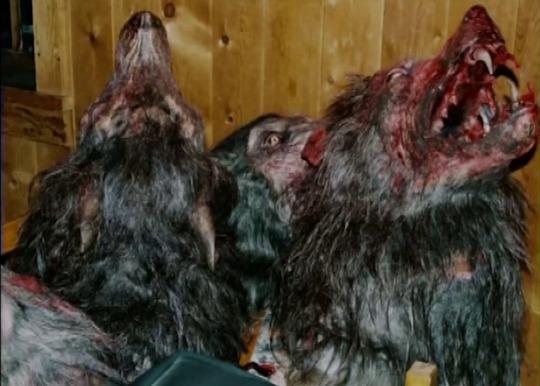

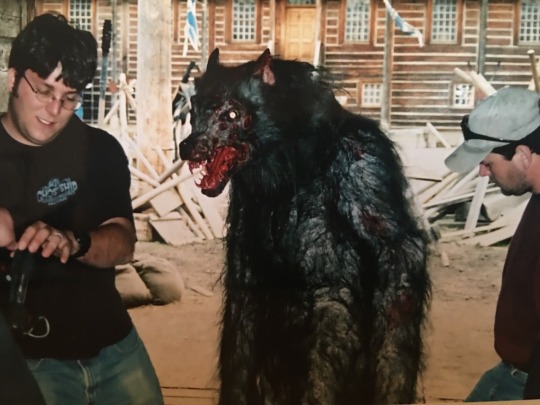
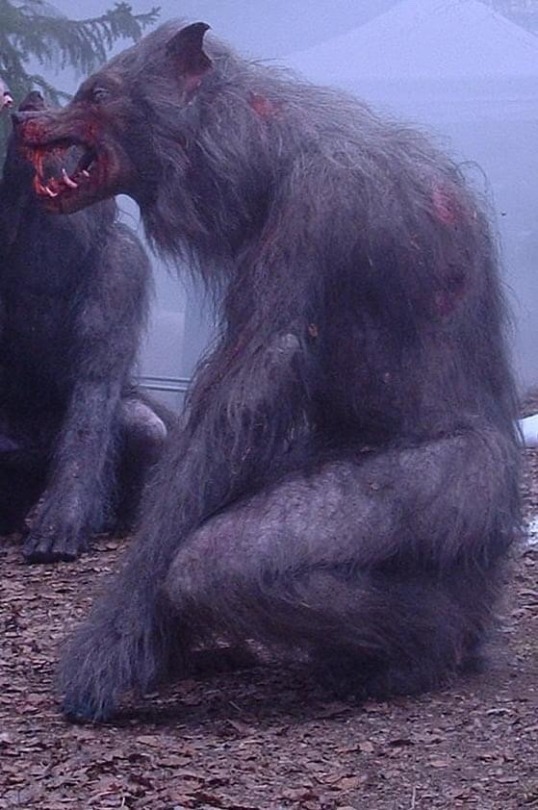
Ginger Snaps 2: Unleashed & Ginger Snaps Back both were filmed back to back and had their special makeup effects realized by KNB EFX Group; Greg Nicotero and Howard Berger designed the werewolf and makeup effects for both films, with Robert Kurtzman also being a designer on Ginger Snaps Back.
The werewolf suits in both films are furred, contrasting Jones' design in the previous film; the suits were realized in a similar fashion otherwise, with a performer walking on all fours with limb extensions and a headpiece fitted with animatronic receives.
#Ginger Snaps#Ginger Snaps 2 Unleashed#Ginger Snaps Back#Ginger Snaps 2#Ginger Snaps Back The Beginning#KNB EFX Group#Greg Nicotero#Howard Berger#Robert Kurtzman#werewolf#werewolves#special makeup effects#practical effects#animatronics
12 notes
·
View notes
Text





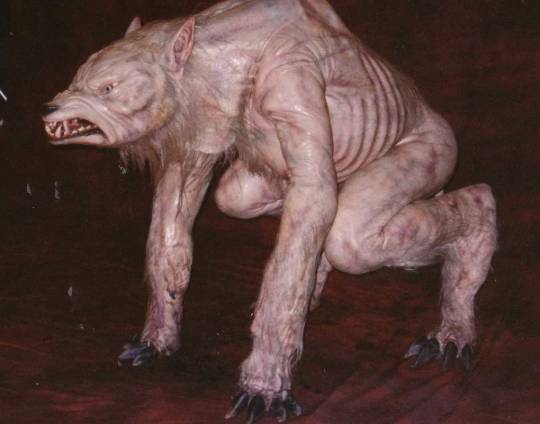


Paul Jones designed the werewolf effects for Ginger Snaps (2000), with the highlight being the mostly furless final form of Ginger Fitzgerald, sculpted with female anatomy such as breasts and nipples and animatronics fitted in the head.
The suit being furless presented some problems for Jones; namely in how to hide the seams! Seams were typically hidden by applied fur on a werewolf suit. Sealing the gaps on the suit would cause the stuntman to suffocate, so was a no-go.
A compromise was made; the Ginger suit would have strategically placed pieces of wispy hair to hide the seams. Additionally, the suit was covered in heavy grease to stop the it obviously coming across as a rubber suit.
Another furless werewolf suit (bottom two images) was constructed, for the anonymous werewolf that attacks Ginger at the film's start. This suit is only very briefly seen in the film, but is a similar design to the Ginger Wolf, albeit with less hair or female anatomy. Look closely and you'll notice it has slightly curved ears, as opposed to the Ginger Wolf's fully erect ears.
#Ginger Snaps#Ginger Fitzgerald#Paul Jones#werewolf#werewolves#special makeup effects#practical effects#animatronics#John Fawcett#Karen Walton
8 notes
·
View notes
Text




While Carlo Rambaldi was responsible for Silver Bullet's main werewolf suit, all the other special makeup effects - including Reverend Lowe's transformation puppets and prosthetics - were realized by Michael McCracken instead.
McCracken's team had to create several werewolf makeups for the infamous church nightmare sequence; notice the brief werewolf mother with a baby werewolf puppet!
#Silver Bullet#Stephen King#Cycle of the Werewolf#Michael McCracken#werewolf#werewolves#prosthetics#prosthetic makeup effects#special makeup effects#puppets#puppeteering
2 notes
·
View notes
Text
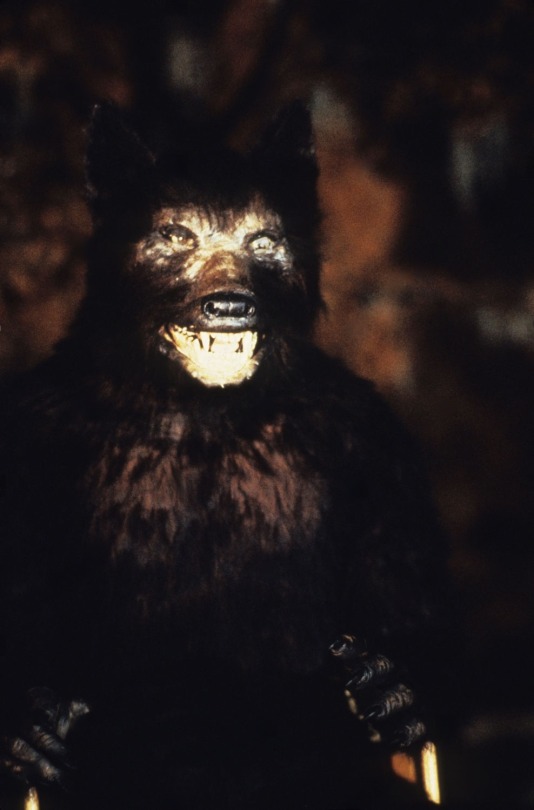

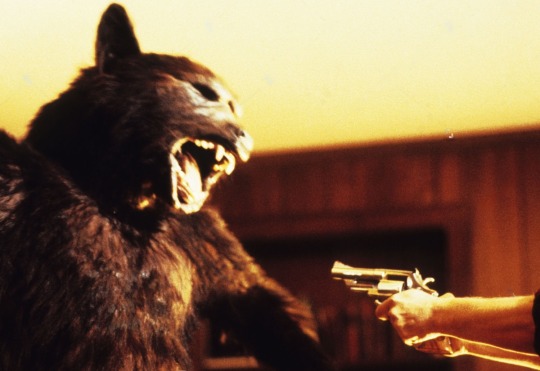

The werewolf form of Reverend Lowe was designed and realized by Carlo Rambaldi. The head itself was entirely animatronic, and according to cinematographer Daniele Nannuzzi, had small holes under the muzzle to allow actor Everett McGill to see.
The animatronic head's expressions were controlled by levers that were connected to the mask via 'cables going out of the wolf's ass' as Nannuzzi so colourfully put it. The bodysuit and head were both coated in bear fur.
#silver bullet#cycle of the werewolf#stephen king#carlo rambaldi#reverend lowe#everett mcgill#dino de laurentiis#werewolf#werewolves#practical effects#special makeup effects#animatronics
1 note
·
View note
Text



Carlo Rambaldi was hired by Dino De Laurentiis to realize the main werewolf in Silver Bullet (1985), the cinematic adaptation of Stephen King's Cycle of the Werewolf novella.
Rambaldi's original design for the werewolf was this rather ape-like design, but De Laurentiis was unimpressed and forced him to start over. Just one example of De Laurentiis' interference on the film.
#Silver Bullet#Cycle of the Werewolf#Stephen King#Carlo Rambaldi#Dino De Laurentiis#werewolf#werewolves#special makeup effects#practical effects
3 notes
·
View notes
Text

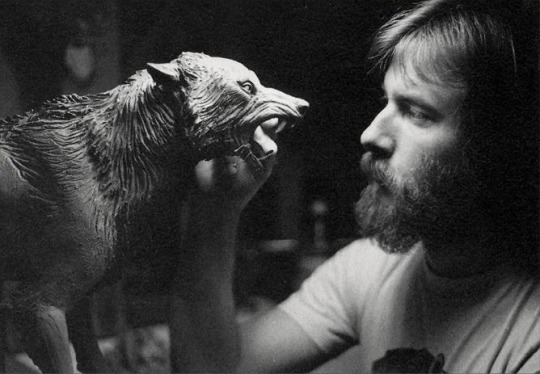
A piece of concept art, and the preliminary maquette for the Kessler Wolf in An American Werewolf in London (1981).
#american werewolf in london#AWIL#Rick Baker#John Landis#werewolf#werewolves#sculpting#concept art#maquette
12 notes
·
View notes
Text

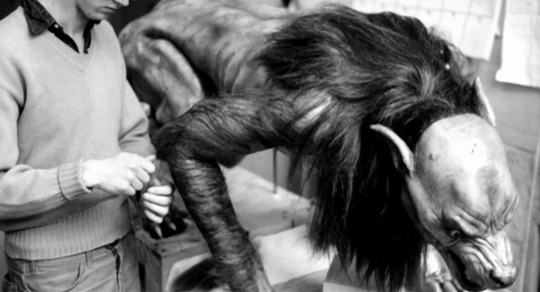
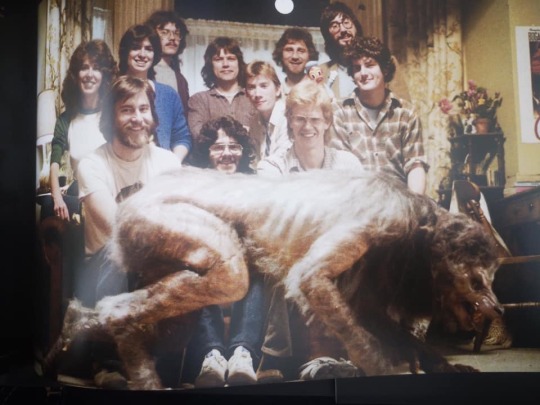

At the end of the iconic transformation sequence, Kessler becomes a 'juvenile' and less furred werewolf, nicknamed the 'man-beast' by the crew. It is only briefly seen in the final film.
The man-beast was a rod puppet operated by someone underneath the set, created from two different moulds - the body was a recasting of the transformation body mould, and the head was a recasting of the final werewolf mould.
#American Werewolf in London#AWIL#John Landis#Rick Baker#David Kessler#werewolf#werewolves#puppeteering#special makeup effects#practical effects
54 notes
·
View notes
Text



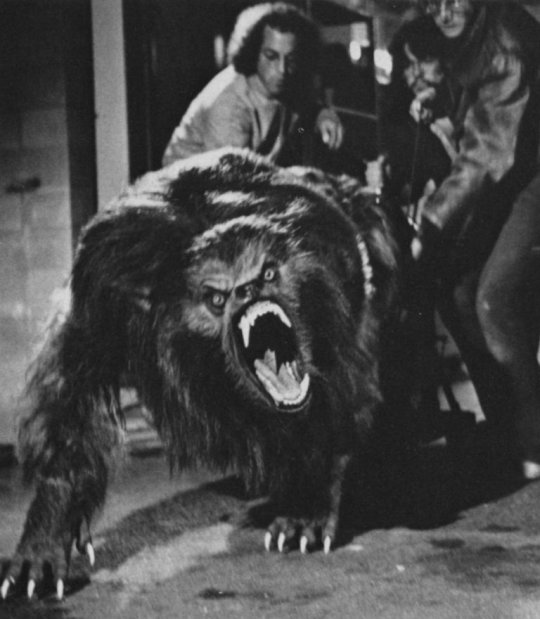
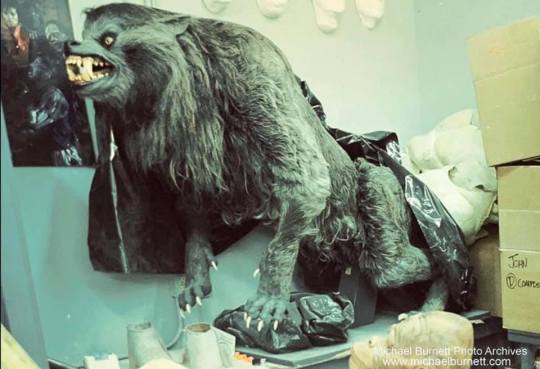

The final form of David Kessler was originally intended to be bipedal, like the werewolves Rick Baker was previously designing on The Howling; however, John Landis was insistent that the final film's beast be 'a four-legged hound from hell'.
The inspiration for the Kessler Wolf's final design came from none other than Baker's pet Keeshond, Bosco. Keeshonds have a very shaggy mane of fur, something that was added to the werewolf around its furless face. The face itself would never be shown fully except for some brief frames, so Baker had a vicious expression sculpted for the face so that any shot would catch it.
Being a quadruped presented problems for Baker; he was anxious about not wanting to have it be 'two men in a suit' a la a pantomime horse. Baker remembered wheelbarrow races he had done as a kid, and thus decided the werewolf was to be a man on a wheeled board, wearing the main wolf suit. The suit's arms had the actors own inside them, but the back legs were puppeteered. Three heads were made, with a hero animatronic head able to do snarling expressions and two stunt heads for the attack sequences. All the heads were able to have their jaws open and close for the snapping.
#American Werewolf in London#AWIL#John Landis#Rick Baker#Kessler Wolf#David Kessler#animatronics#puppeteering#special makeup effects#special effects#werewolf#werewolves
26 notes
·
View notes
Text






The transformation sequence in American Werewolf in London, where David Kessler turns from man to wolf, was achieved with a mix of prosthetics and puppetry.
At different points, prosthetics were applied to David Naughton's face, chest and hands, especially for the closeups of his face; John Landis was not impressed with the large hand prosthetics, calling them 'Popeye hands'.
Naughton's wolf body was a dummy 'body' applied to Naughton, whose real body was obscured by the set's floorboards; creating the illustion that he was almost entirely transformed.
The closeups of Naughton transforming were achieved with 'change-o-head' and 'change-o-hand' puppets, powered by hydraulics. To cut a long and very technicaly story short, the puppets had an elastic urethane skin that could stretch as the puppet undearneath pressed outward.
#American Werewolf in London#AWIL#John Landis#Rick Baker#change-o-head#puppetry#puppeteering#special makeup effects#prosthetic makeup#makeup effects#David Naughton#David Kessler#werewolf#werewolves
7 notes
·
View notes
Text


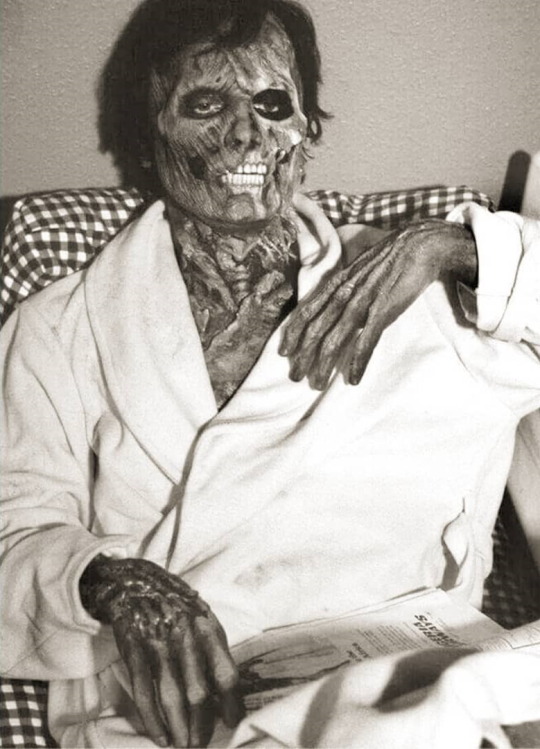


The undead Jack Goodman was realized in different stages of makeup by Rick Baker and his team; the middle stages of Goodman's decomposition was realized as heavy makeups applied on Griffin Dunne.
The final stage, where Goodman had almost decayed into a skeleton, presented some problems for Baker at first. Corpses become thinner as they decay, so applying makeup to Dunne's face would give away that it was a living actor underneath. The solution was that the last form of Jack would be realized as a puppet; Baker took a life cast of Griffin and took a clay press, carving out his own idea of what Dunne's own skull would look like. In the porn theatre scene, Dunne operated the puppet as he spoke his lines on-set.
Distance shots of the completely decayed Jack (shown in middle image) were still realized as prosthetic makeup applied to Dunne. Dunne at first was not happy about the prospect - he was hoping the movie would be his big break, but now worried nobody would want to look at him thanks to being coated in the gruesome gore prosthetics.
#American Werewolf in London#AWIL#Rick Baker#Griffin Dunne#John Landis#undead#zombies#special makeup effects#gore effects#prosthetics#special effects
8 notes
·
View notes
Text



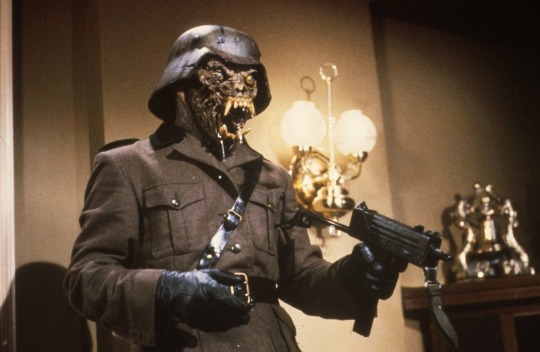
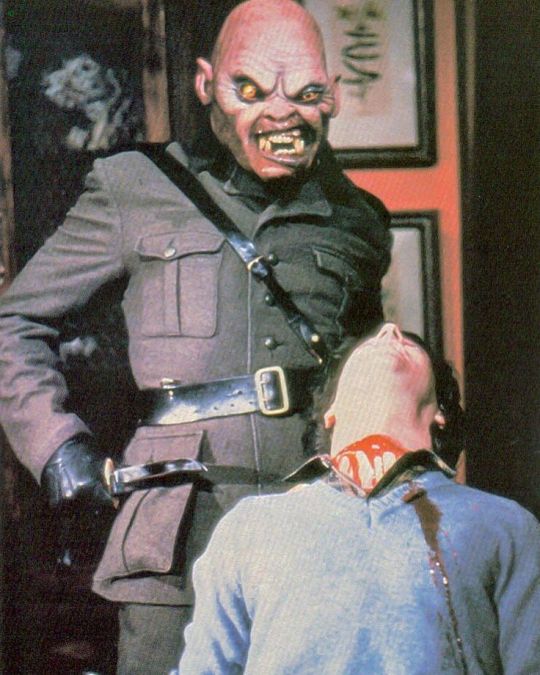

The infamous 'Nazi werewolf' nightmare sequence in American Werewolf in London was perhaps the easiest part for Rick Baker's special makeup effects team; all the demon werewolves were realized as simple 'pull over' latex masks.
Tom Hester sculpted the bald demon, Steve Johnson sculpted the mohawked demon and Shawn McEnroe did the 'wolfman' mask.
#American Werewolf in London#AWIL#John Landis#Rick Baker#Steve Johnson#Tom Hester#Shawn McEnroe#special makeup effects#prosthetics#masks#makeup effects#werewolf#werewolves
8 notes
·
View notes
Text


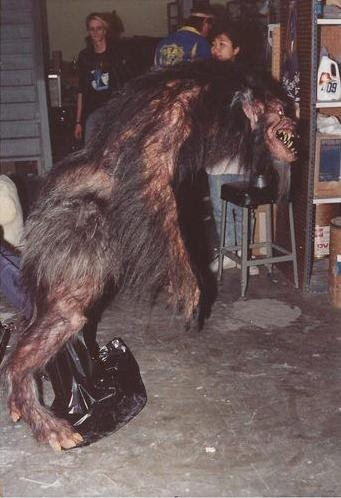


Howling IV: The Original Nightmare (1988) had its special makeup effects realized by Steve Johnson's XFX Inc. The highlight is this impressive werewolf suit. The performer wore the head like a hat, and it had a simple mechanism to open and close the jaw.
The performer did not wear any prosthetics for the legs as they would only be shot from the waist up, but some sequences utilized a wheelbarrow like mechanism with false legs, for the scenes implying the werewolf was walking on all fours.
A resculpt was presumably made for the sequence in which a werewolf reshapes itself after melting down, in a very unique and gruesome transformation. The wolf suit itself was then realized in the following sequel, Howling V, but barely seen in that one.
#Howling 4#howling 4 the original nightmare#werewolf#werewolves#Steve Johnson#XFX Inc#practical effects#special effects#special makeup effects
3 notes
·
View notes